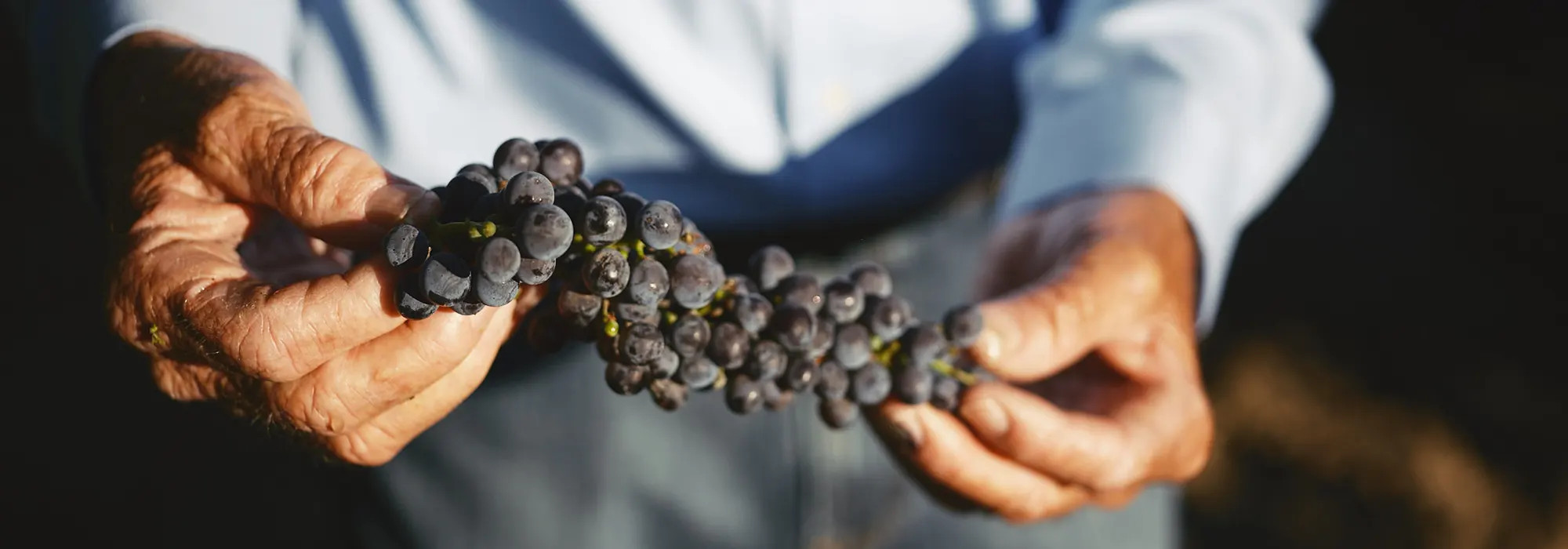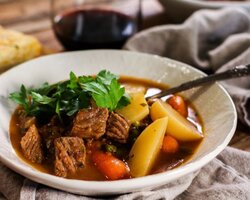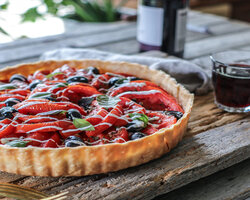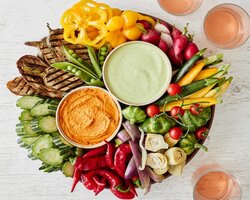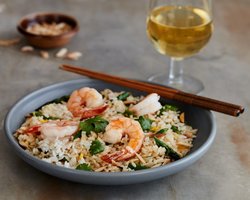Bruschetta with Warm Goat Cheese, Roasted Asparagus, and Pistachio Pesto
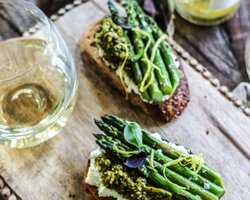
California’s asparagus season is short so it’s a good idea to get your fill while you can. When you crave a change-up from plain steamed or roasted asparagus, try them this way: on top of crunchy toast with warm, creamy goat cheese and a dollop of fragrant pesto. Serve as a hearty appetizer at a dinner party or enjoy for lunch with a green salad. Pair with your favorite Temecula Valley Riesling or Rosé.
Serves 4
Ingredients:
Pesto:
- ¼ cup (35 g) raw pistachios
- 16 large basil leaves
- 1 small clove garlic, sliced
- ¼ cup (60 ml) extra virgin olive oil
- 1 teaspoon grated lemon zest
- Sea salt
- Fresh lemon juice
- 2 dozen very slender asparagus, tough ends removed
- 4 slices sourdough bread, each about 4 by 3 inches (10 by 7.5 cm) and ½ inch (12 mm) thick
- 1 tablespoon plus 2 to 3 teaspoons extra virgin olive oil, plus more for brushing
- Sea salt
- ¼ pound (110 g) fresh goat cheese with no rind
Directions:
Preheat the oven to 450°F (230°C).
Make the pesto: In a food processor, combine the pistachios, basil, garlic, and olive oil and pulse until the basil and nuts are finely chopped but do not grind to a paste. Transfer the pesto to a bowl and stir in the lemon zest and salt to taste. Add a few drops of lemon juice to balance the flavor.
If necessary, trim the asparagus spears so they are no longer than the bread. Place them on a baking sheet and toss with enough olive oil to coat them lightly, about 2 to 3 teaspoons. Sprinkle with salt and roast until they are tender and starting to char, about 8 minutes.
If the goat cheese is firm enough to slice, cut into three or four evenly thick slices and place them in a lightly oiled baking dish just large enough to hold them. Drizzle with 1 tablespoon olive oil. If the goat cheese is too soft to slice, spoon it into a lightly oiled baking dish, flattening it slightly with the back of a spoon, and drizzle with 1 tablespoon olive oil. Bake until the goat cheese quivers when touched, like a soft custard, about 5 minutes.
Toast the bread. Brush one side of each toast with olive oil. Divide the warm cheese among the toasts, spreading it evenly. Top each toast with asparagus and a dollop of pesto, dividing evenly. Serve immediately.
Suggested Pairing:
Akash Winery ~ 2020 Parlez-Vous Rosé – A bright and intriguing French-style rosé as lovely as its name.
Baily Winery ~ 2019 Riesling – Delicate, dry and fruity white.
Miramonte Winery ~ 2018 Riesling – Spicy citrus, lemongrass, orange blossom, honeyed lemon, butterscotch, zen stone finish.
Robert Renzoni Vineyards – 2019 Lyric Rose – Dry Rosé made of Syrah grape, pale salmon hue, delicate bouquet of rose petals with peach skin exuding with flavors of guava and ripe peach.
Recipe and photo courtesy of the Wine Institute of California.

